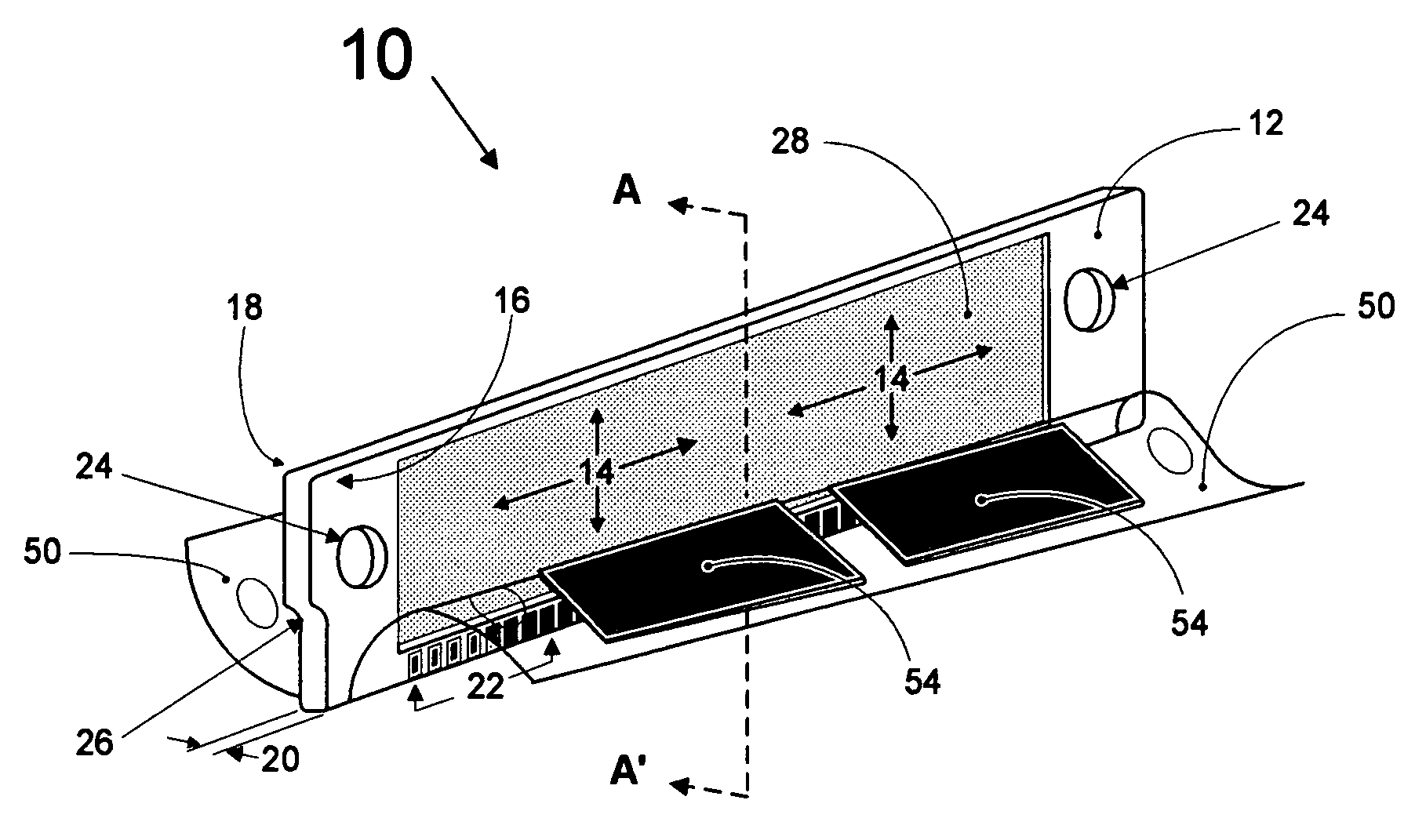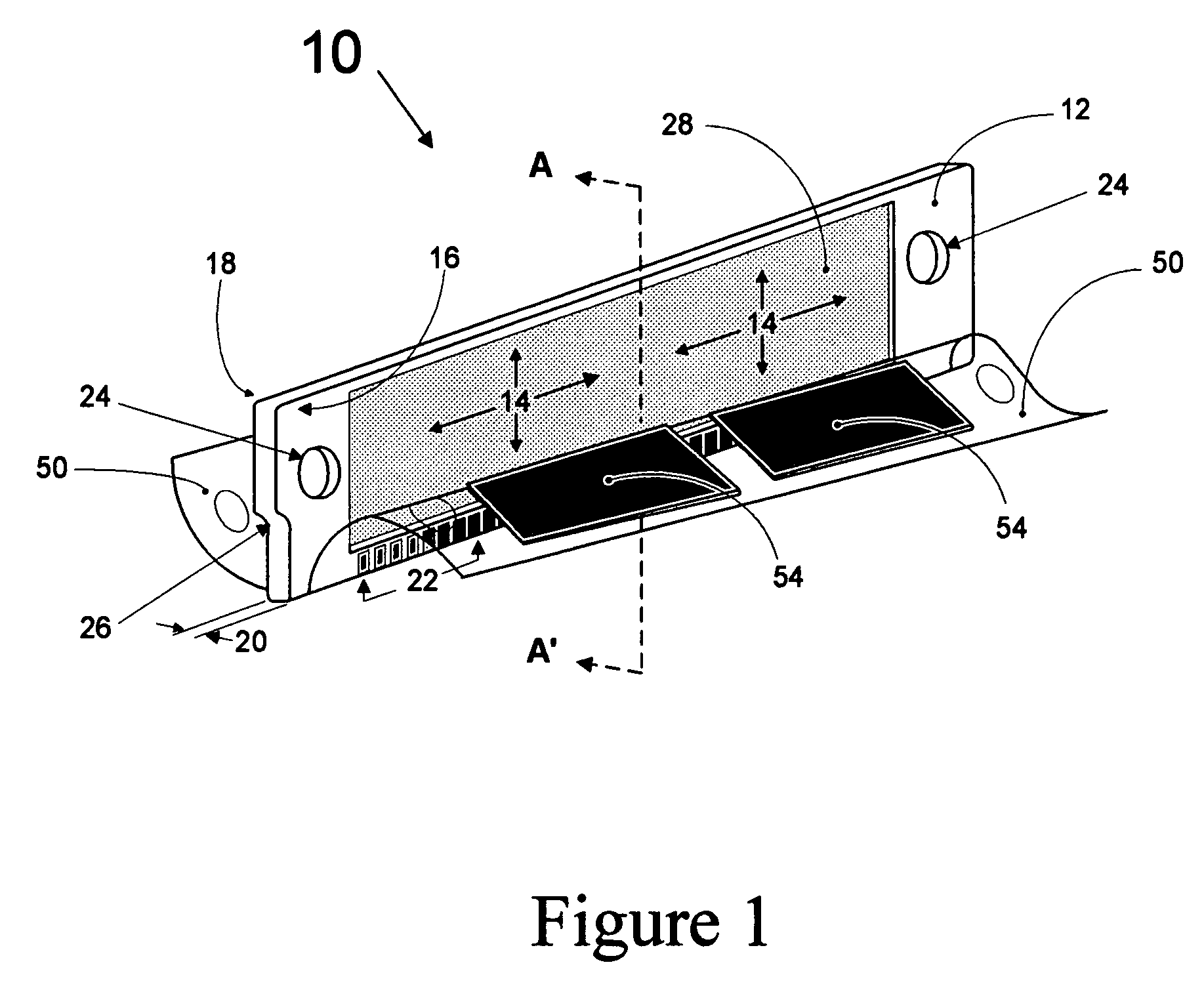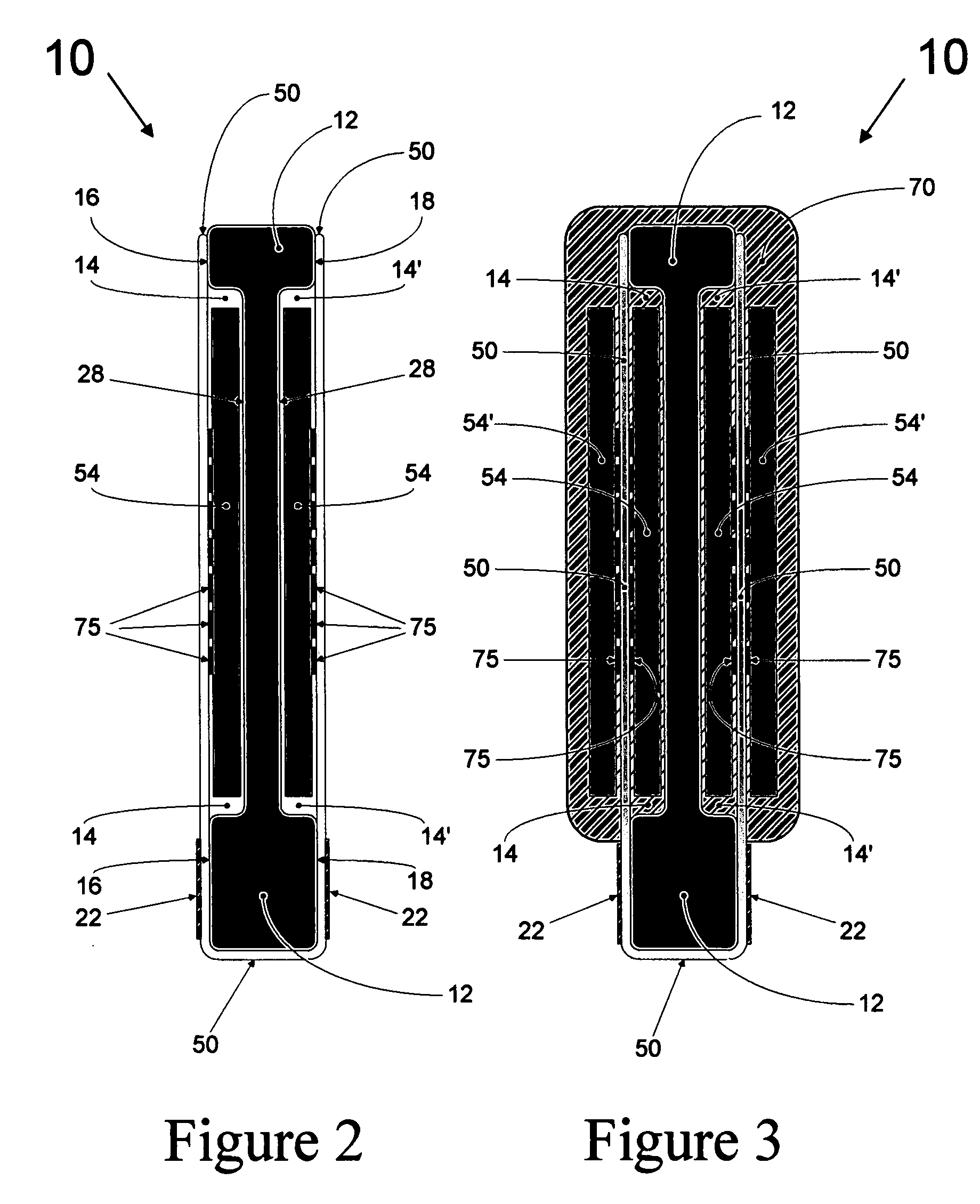Thin multichip flex-module
- Summary
- Abstract
- Description
- Claims
- Application Information
AI Technical Summary
Benefits of technology
Problems solved by technology
Method used
Image
Examples
Embodiment Construction
[0050]The following embodiments introduce new construction concepts and assembly methods directed at providing lower-cost, higher-density, packaging solutions for next generation electronic module products. The module embodiments disclosed herein may be broadly classified as “Multichip Modules” in that the semiconductor devices illustrated are preferably in a “bare-die” or “chip” form. It will be understood, however, that in some instances packaged die may be used instead of bare die, depending on design objectives.
[0051]The electronics industry presently recognizes three main types or divisions of multichip modules based on the type of interconnecting substrate upon which the bare-die or chips are assembled: MCM-D (deposited thin film), MCM-C (ceramic), and MCM-L (laminate). MCM type-L refers to conventional epoxy / glass, printed circuit board laminate substrates and comes closest, of the three categories, for classifying the present invention. Epoxy / glass PCBs, however, are general...
PUM
 Login to View More
Login to View More Abstract
Description
Claims
Application Information
 Login to View More
Login to View More - R&D
- Intellectual Property
- Life Sciences
- Materials
- Tech Scout
- Unparalleled Data Quality
- Higher Quality Content
- 60% Fewer Hallucinations
Browse by: Latest US Patents, China's latest patents, Technical Efficacy Thesaurus, Application Domain, Technology Topic, Popular Technical Reports.
© 2025 PatSnap. All rights reserved.Legal|Privacy policy|Modern Slavery Act Transparency Statement|Sitemap|About US| Contact US: help@patsnap.com



